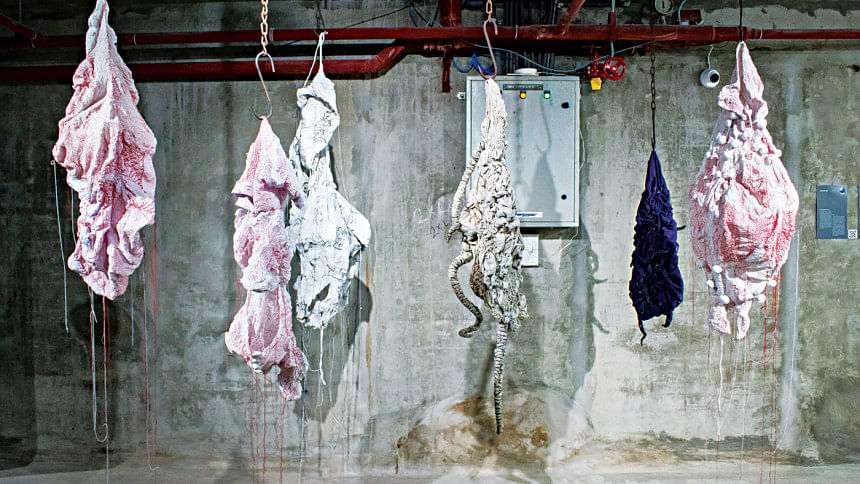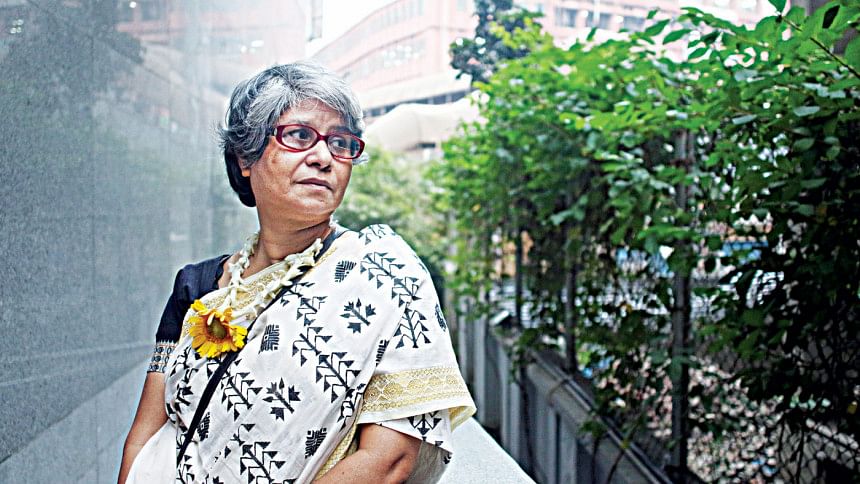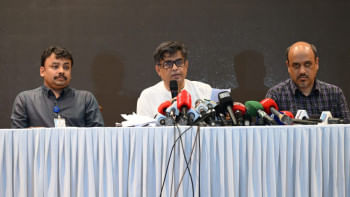In conversation with Dilara Begum Jolly

Yet, her plethora of meditative sketches on tragic happenings are imbued with a certain sense of surreal sublimity. Though she started out as a traditional painter, Jolly went on to experiment with different areas, including filmmaking, photography and even the postmodernist terrains of performance art.
She compared the medium of art to the languages we speak, talking about how she tinkers around with diverse forms, until she comes across the one which seems to be perfectly juxtaposed with the essence of the art she wants to create.
"Deher Akkhyan", her project for the recently concluded "Chobi Mela Shunno", was a composition of soft sculptures, with materials such as worn out petticoats, chemises, and blouses overwrought with complex expressions of needlework. "Every execution of the stitch is reminiscent of pain— a visible or invisible wound that scars our bodies as extraneous forces continue to write its dominance over the body, and the interiority that it enshrines," says Jolly.
A sinister metaphor was at play within these pieces, perfectly capturing the menacing relationship between the female body and psyche and how it is pinned down by the dominant, extraneous forces of a patriarchal society. Jolly described it as one of her pandemic projects, and highlighted how many horrific incidents relating to female discrimination, which happened recently, jolted her. Her tangled thoughts took the form of this fiercely crafted visual saga at "Chobi Mela Shunno". Some of her other works include "A Beast, a God and a Line" (Dhaka Art Summit, 2018), "Excavating Time" (Bengal Gallery of Fine Arts, Dhaka, 2006), "Threads of Testimony" (Dhaka, 2014) and "microtears'/Omorar Akkhan" (Daily Star-Bengal Arts Precinct, Dhaka, 2015).

When asked about her inspirations and the themes she visited regularly, Jolly's answers sadly held bitter and uncomfortable truths. She dove deep into the anxieties of the "male gaze" and how it has become a recurring motif in her works. "I want to capture the apprehension I feel when I am constantly scrutinised wherever I go, sometimes figuratively and at times, literally," she says. "I observe how girls were objectified and portrayed in calendars or in advertisements."
Despite this however, Jolly asserted that her works are not mirrors to the society. "My art is not a piece of slogan or propaganda. Rather, it is an outcome of my perceptions on different happenings," she says. Her works often blatantly spell out the raw truth, while at other times, provide the viewer with a more holistic lens. She also focuses on the universality of the female experience, drawing light upon the highly misogynistic aspects of our society and discussing how women ought to envision themselves as a unified whole – a tattered tale knitted with similar snippets of trauma and tragedy.
When asked about her favourite artists, Jolly exuberantly named Frida Kahlo, Judy Chicago, and Novera Ahmed. She said that currently, her main inspiration lies in Mexican, African and Pakistani art. As an ending note to the conversation, Jolly advised young artists and creators to stay true to their roots.
The author is a postgrad student of English Literature and a freelance journalist. [email protected]

 For all latest news, follow The Daily Star's Google News channel.
For all latest news, follow The Daily Star's Google News channel. 



Comments